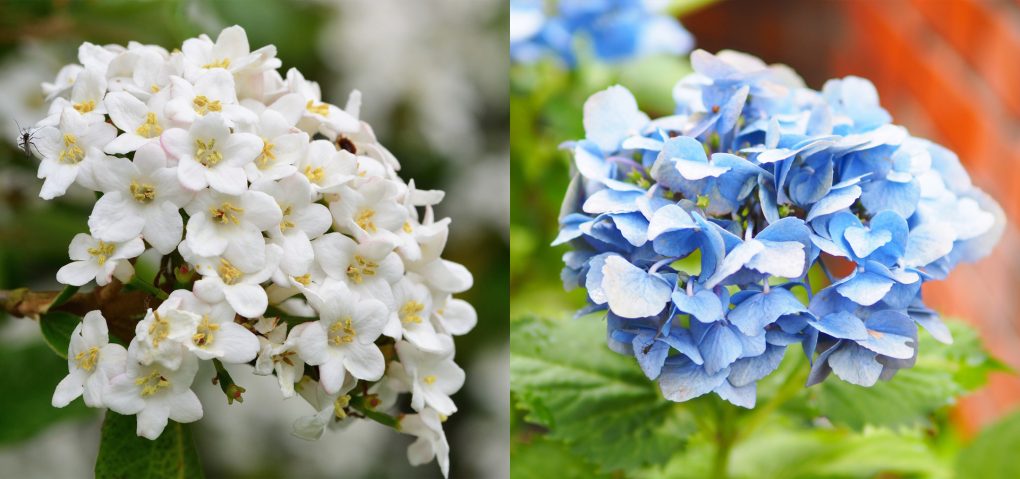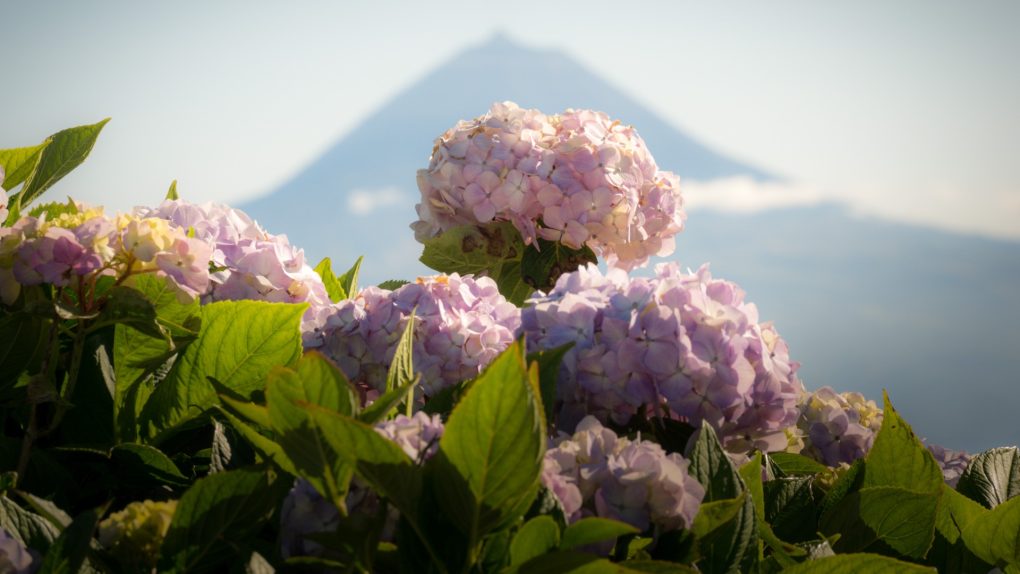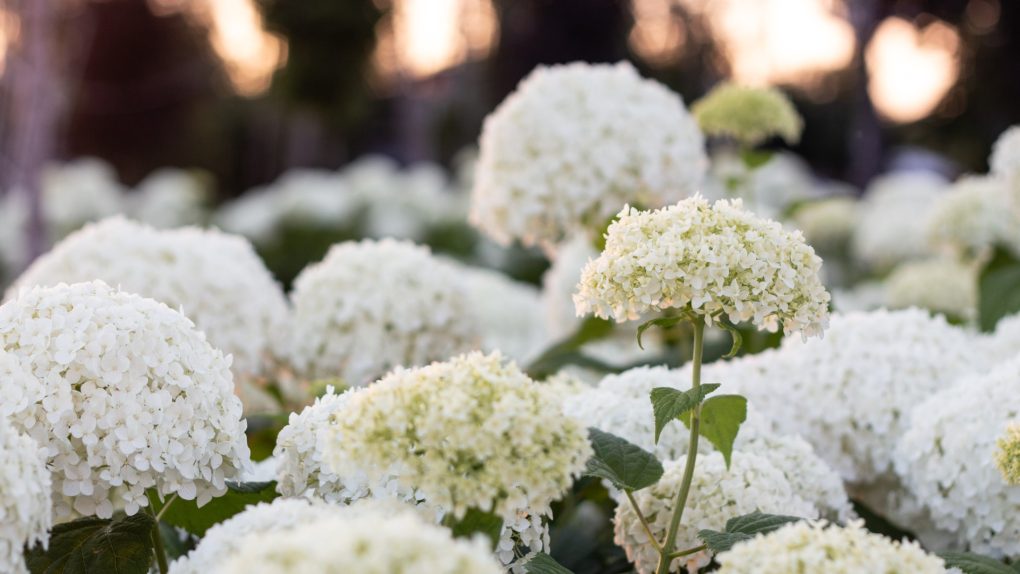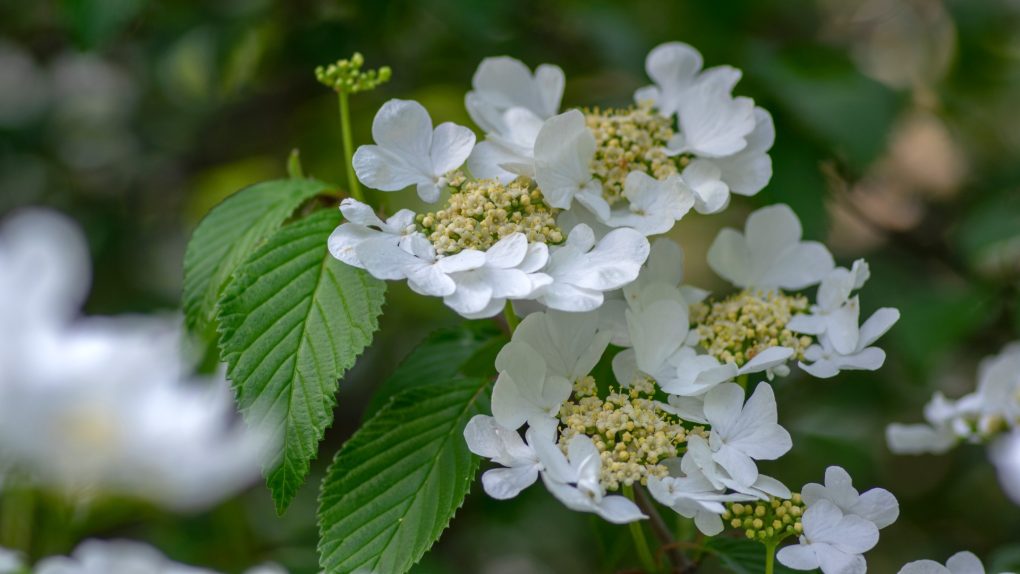Hydrangea vs Viburnum: A Comparison of Popular Garden Shrubs
Hydrangeas and viburnums are two of North America’s most popular flowering shrubs. Both plants are known for their beautiful blooms and can be used to add color and texture to any garden or landscape. While these two plants may look similar at first glance, several key differences exist between them.

One of the main differences between hydrangeas and viburnums is their bloom time. Hydrangeas typically bloom in the spring and summer, while viburnums tend to bloom in the summer and fall. Additionally, hydrangeas have smaller flower heads that seldom exceed 8 inches, while viburnum flower heads are 8 to 12 inches in diameter. Another difference is that hydrangeas have a much longer bloom than viburnums, with blossoms remaining on the shrub for as long as two months.
Despite these differences, both hydrangeas and viburnums can be used to create a beautiful garden or landscape. Whether you prefer the delicate blooms of the hydrangea or the larger, showier viburnum blooms, both plants will surely add color and texture to any outdoor space. So if you’re looking for a way to add beauty to your garden or landscape, consider planting one of these popular flowering shrubs.
Table of Contents
Differences Between Hydrangea and Viburnum
Appearance
Hydrangeas and viburnums are both popular garden shrubs with some similarities. Both plants produce clusters of flowers that can be white, pink, or blue. However, there are some differences in the appearance of these flowers. For example, hydrangeas have smaller flower heads seldom exceeding 8 inches, while viburnum flower heads are 8 to 12 inches in diameter. Hydrangeas also have a much longer bloom than viburnums, with blossoms remaining on the shrub for as long as two months.
Growing Conditions
Hydrangeas and viburnums have different growing conditions. Hydrangeas prefer a colder environment and grow best in USDA zones 3 to 9. They require moist, well-drained soil and partial shade. Conversely, Viburnums are more tolerant of heat and drought and can grow in USDA zones 2 to 9. They prefer full sun to partial shade and well-drained soil.

Uses
Hydrangeas and viburnums have different uses in the garden. Hydrangeas are often used as border plants, in containers, or as accent plants, and are also popular for their use in cut flower arrangements. Viburnums are often used as specimen plants, hedges, or screens, and are also popular for their use in wildlife gardens, as they attract birds and butterflies.
In summary, while hydrangeas and viburnums have some similarities in appearance, they have different growing conditions and uses. Therefore, gardeners should consider these differences when deciding which plant to choose for their garden.
Hydrangea Varieties
Hydrangeas are a popular flowering shrub that come in a variety of sizes, shapes, and colors. This section’ll look closely at some of the most common hydrangea varieties.
Bigleaf Hydrangea
Bigleaf hydrangeas, or French hydrangeas, are perhaps the most well-known hydrangea. They are known for their large, round flower heads in shades of pink, blue, and purple. Bigleaf hydrangeas are also unique in that the color of their flowers can change depending on the soil’s acidity. The flowers will be blue in acidic soil, while in alkaline soil, they will be pink.
Panicle Hydrangea
Panicle hydrangeas, also known as peegee hydrangeas, are a hardy variety that can grow in various climates. They are characterized by their cone-shaped flower heads that start white and gradually turn pink as they mature. Panicle hydrangeas are also known for their long bloom time, lasting from mid-summer to early fall.
Smooth Hydrangea

Smooth hydrangeas, also known as wild hydrangeas, are a native variety found in the eastern United States, known for their large, flat-topped flower heads that can be up to a foot across. Smooth hydrangeas come in shades of white, pink, and blue and are popular for naturalistic gardens.
Mountain Hydrangea
Mountain hydrangeas, or Japanese hydrangeas, are a smaller variety native to Japan, characterized by their delicate, lace-like flowers in shades of pink, blue, and white. Mountain hydrangeas are also known for their compact size, making them popular for small gardens and container planting.
In summary, hydrangeas are a diverse and beautiful group of plants that come in various shapes, sizes, and colors. Whether you’re looking for a hardy shrub that can withstand harsh weather conditions or a delicate flower that will add a touch of elegance to your garden, there is a hydrangea variety that will fit your needs.
Viburnum Varieties
Viburnum is a genus of flowering shrubs that includes over 150 species. They are known for their attractive flowers, berries, and foliage, and are some popular varieties of Viburnum:
Arrowwood Viburnum
Arrowwood Viburnum (Viburnum dentatum) is a deciduous shrub native to North America. It is named for its tough, straight stems that were once used to make arrows. Arrowwood Viburnum can grow up to 10 feet tall and wide. It has glossy, dark green leaves that turn reddish-purple in the fall. In the spring, it produces clusters of white flowers that give way to blue-black berries in the fall. Arrowwood Viburnum is a popular choice for hedges, screens, and naturalizing.
European Cranberrybush Viburnum

European Cranberrybush Viburnum (Viburnum opulus) is a deciduous shrub native to Europe and Asia. It can grow up to 15 feet tall and wide. It has lobed, dark green leaves that turn reddish-purple in the fall. In the spring, it produces clusters of white flowers that give way to bright red berries in the fall. The berries are edible but tart, and can be used to make jelly. European Cranberrybush Viburnum is popular for hedges, screens, and naturalizing.
Snowball Viburnum
Snowball Viburnum (Viburnum opulus ‘Roseum’) is a deciduous shrub that is native to Europe and Asia. It can grow up to 12 feet tall and wide. It has lobed, dark green leaves that turn reddish-purple in the fall. In the spring, it produces large, round clusters of white flowers that resemble snowballs. Snowball Viburnum is popular for borders, screens, and specimen plants.
Wayfaringtree Viburnum
Wayfaringtree Viburnum (Viburnum lantana) is a deciduous shrub native to Europe and Asia. It can grow up to 15 feet tall and wide. It has lobed, dark green leaves that turn reddish-purple in the fall. In the spring, it produces clusters of white flowers that give way to red berries in the fall. Wayfaringtree Viburnum is a popular choice for hedges, screens, and naturalizing.
Overall, Viburnum is a versatile and attractive group of shrubs that can be used in various landscape settings.
How to Care for Hydrangeas and Viburnums
Watering
Both hydrangeas and viburnums require consistent watering, especially during dry spells. However, overwatering can lead to root rot and other problems. It’s important to ensure the soil drains well and doesn’t become waterlogged. A good rule of thumb is to water deeply once a week, rather than shallowly more often. Mulching can help retain moisture in the soil.

Fertilizing
Fertilizing hydrangeas and viburnums can help promote healthy growth and abundant blooms. It’s important to use a fertilizer appropriate for the specific plant and follow the instructions carefully. Over-fertilizing can lead to excessive growth or damage to the plant. Generally, it’s best to fertilize in the spring and again in the summer, using a balanced fertilizer that contains equal amounts of nitrogen, phosphorus, and potassium.
Pruning
Pruning can help shape and control the size of hydrangeas and viburnums and promote healthy growth and flowering. It’s important to prune at the right time of year, as both plants bloom on old wood. Hydrangeas should be pruned after they finish blooming, while viburnums can be pruned in late winter or early spring. Deadheading can also help promote additional blooms.
Pest and Disease Control
Hydrangeas and viburnums can be susceptible to various pests and diseases, including aphids, mites, powdery mildew, and leaf spot. It’s important to monitor the plants regularly and take action at the first sign of a problem. This may include using insecticidal soap, neem oil, other treatments, and removing affected leaves or branches.
Caring for hydrangeas and viburnums requires attention to detail and a willingness to adapt to changing conditions. With proper care, these beautiful and versatile plants can thrive in various settings and provide years of enjoyment for gardeners and nature lovers.
